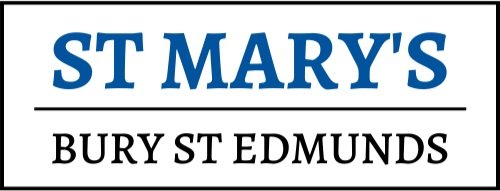Our Story
St Mary’s was the first church to be built in our town.
Bury St Edmunds was originally the Anglo-Saxon settlement of Beodricsworth and was established around our church around 600-700AD on a site nearer to the river.
In 869, King Edmund refused to renounce his Christian faith and was killed by Viking invaders. His body was brought to St Mary’s Church, where it was soon venerated in a new shrine.
The fame of Edmund grew far and wide. In 1020, King Canute invited Benedictine monks to establish a much grander abbey. St Mary’s Church and the town itself were displaced to their present sites and the magnificent abbey was constructed where St Mary’s once stood.
The abbey dominated the life of the town, now called St Edmundsbury, and exploited its power by extracting heavy rents and taxes. While the abbot and the monks enjoyed a privileged life in the abbey’s inner precincts, the church of St Mary and the newly-built churches of St James and St Margaret stood at the perimeter of the abbey wall, serving the local population.
This focus on local people has always been at the centre of our mission. Our door opens westwards towards the town and parish. People today still come to pray, to celebrate with weddings and baptisms and to mourn at funerals. We are a people’s church.
When King Henry VIII’s favourite sister, Mary Tudor, once queen consort of France, died in 1533, her body was buried in the abbey. But not long after, the abbeys of England were dissolved and Mary’s body was re-buried in St Mary’s Church in 1538.
The local population treasured St Mary’s Church and it remains intact, preserving its original beauty, precisely because the townspeople knew it as their church. Local hero Jankyn Smyth had settled the pernicious taxes of the abbey from his own wealth. He enlarged St Mary’s church for local people and a service to commemorate his generosity was established. It is still held today - one of the oldest services of its kind in the country.
The people of the town had suffered greatly under the abbey’s oppression. They had attacked it several times, which led to the fortification of its defensive wall. The beautiful Norman Gate and Abbey Gate, through which visitors are now welcomed into the Abbey Gardens, were put up to keep the local population out.
After the closure of the abbey, local people helped themselves to its fine dressed stones. Very little of the enormous structure remains today on its original site, just enough to hint at its enormous scale. But look closely around the town and you will find the abbey’s stone in many garden walls and buildings.
St Mary’s Church implemented and maintained changes that came with the establishment of the new Church of England after the Reformation and has upheld the reformed tradition. In the eighteenth century, the evangelical Thomas Clarkson felt called by God to investigate the trade in enslaved people, rather than pursue a career in the church. He lived in our parish and worshipped at St Mary’s. His writings, drawings and collection of exhibits supported the campaign to end the cruelty of slavery. They were vital in the abolitionist cause and led to freedom for millions.
In the nineteenth century, to meet the needs of a growing population, St Peter’s District Church was built in Hospital Road. It remains a thriving community which works closely with St Mary’s as part of one parish.
We are proud to have remained the church of the people and to be God’s church for the people of this wonderful place.
Come to visit us. Free leaflets are available which show the principal sights and a guide book tells even more about:
Queen Mary’s tomb and the window gifted by Queen Victoria which tells the story of Mary’s remarkable life
the chilling cadaver tomb of John Baret and the splendid chantry ceiling above
the unique angel roof carved from English oak over five hundred years ago, which depicts an angelic procession on its hammerbeams.
the regimental chapel of the Suffolk Regiment, now the Royal Anglian Regiment, and the associated war memorials, standards, colours and cenotaph which recalls the sacrifice of Suffolk people in war.
Come and worship with us. Join your praises to a tradition which goes back centuries.




